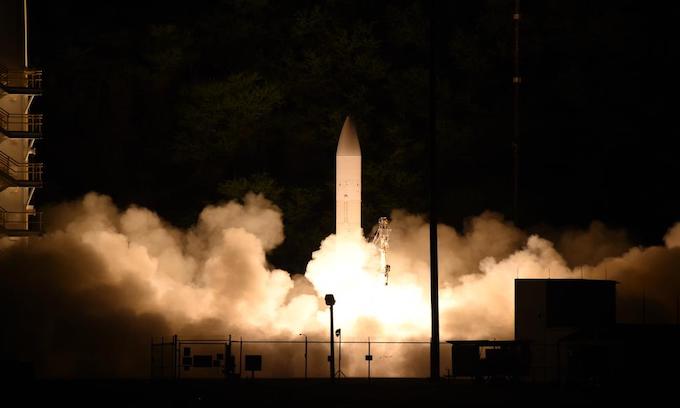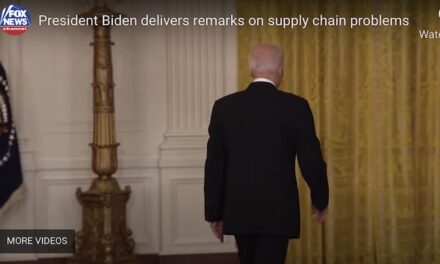Institutional think-tanks such as the Washington-based Center for Strategic & International Studies (CSIS) routinely scrutinize data in “war game” analyses that alert Pentagon planners of projected stresses and shortfalls across varying conflict scenarios.
Right now, with Ukraine receiving weapons, munitions, and financial support from more than 50 nations in fighting off Russia’s February 2022 invasion, a strata of supply chain strains are vexing Western European and American efforts to meet Kyiv’s demand for such basics as bullets and bombs.
Decades after the 1991 dissolution of the Soviet Union, the United States, its NATO partners, and its allies across the globe, are racing to revitalize a defense industrial base that had contracted and retooled as part of the “peace dividend” that followed the conclusion of the Cold War.
These initiatives will take years to fully synchronize to sustain Ukraine in what most analysts now project will be a sustained high-intensity war of logistics, supplies, and attrition not seen in Europe since World War II.
While Russia is the pressing, immediate threat to NATO and the EU, it is not the top “pacing challenge” for the United States and its Indo-Pacific allies such as Australia, Japan, and the Philippines.
That top priority is the People’s Republic of China, which has aggressively modernized its expanding military the last two decades, amassing a 400-ship navy, building bases on disputed South China Sea islands, and threatening to invade Taiwan.
If a shooting war between the PRC and United States erupts while Ukraine remains intensely engaged with Russia, “war game” analyses, such as those conducted by CSIS, question whether America’s defense industrial base can independently produce enough firepower fast enough to keep its forces in the fight.
US Industry Not Ready for Two-Front War
During a four-hour series of Transatlantic Defense forums on April 5, CSIS Transnational Threats Project Director Seth Jones said in “war game” scenarios where the United States is confronted with supplying Ukraine in a high-intensity war against Russia—never mind direct NATO engagement—while simultaneously fighting an Indo-Pacific war against the PRC, the demand “for munitions, particularly long-range missiles” could quickly outpace supply.
In fact, Jones said, “We run out … in a week or so.”
“I don’t think the results [of ‘war game’ projections] are wrong. If we are in that kind of fight, it is going to go fast,” said U.S. Navy Admiral Christopher Grady, the vice chair of the Joint Chiefs of Staff, acknowledging that ramping up defense production “is a very real challenge.”
Grady said the Pentagon, NATO, EU, and Indo-Pacific allies are re-examining and adjusting defense production using the Ukrainian “shell rate” of 7,000 expended 155mm artillery rounds a day as the standard projected need.
That rate of expenditure far exceeds projections, he said, before noting planners typically miss the mark in forecasting munitions expenditures in combat.
“The bigger issue is we always underestimate how much we are going to shoot,” Grady said, especially with the liberal use of “guided munitions” in relatively low-tech conflicts against non-nation terrorist groups in the Middle East and North Africa where “we’re shooting Hellfires [missiles] at guys on motorcycles; pretty expensive weapon for that.”
The Pentagon is revamping its procurement schedules for weapons systems and munitions based on Ukraine, which provides a “sanguine, realistic analysis of what our needs will be,” he said.
A key component for the United States in preparing for a war with the PRC is NATO and EU member nations—most but not all the same countries—increasingly assuming more munitions production capacity in a “whole of Europe” approach to confronting Russia.
That will allow American industry to restock U.S. arsenals and stockpiles for a storm brewing on an ever-nearing horizon.
“If Russia is the hurricane,” said French Navy Vice Admiral Hervé Bléjean, director general of EU’s military staff and Ukraine assistance mission, “China is climate change.”
Paying’ for the ‘Peace Dividend’
When asked if America has the defense industrial base right now to sustain forces in a two-front war, former U.S. Under Secretary of Defense for Acquisition and Sustainment in the Trump administration Ellen Lord replied with an emphatic, “We have not.”
It’s a serious problem, she said, but by recognizing it as an issue, there’s an opportunity for “constructive collaboration” to simplify and speed weapons and munitions production.
That process has begun with the “fragility of the industrial base” exposed by “the Ukrainian challenge,” Grady said.
There are three “contributing factors” constraining U.S. defense production that must be addressed, he said.
“The first is the contraction of the industrial base,” Grady said, noting a quarter century ago there were 25 U.S. shipyards qualified to build and refurbish warships and “we’re now down to six.”
When it comes to weapons development and munitions productions, he said, the post-Cold War “peace dividend” contraction often means the military is reliant on “a single source in the supply chain.”
The second factor, Grady said, “is the complexity of what we build. In World War II, [U.S. shipyards] were pumping out a Liberty ship every three days. You are not going to do that” with, say, a contemporary submarine.
“Third is ‘just-in-time’” deliveries of materials by contractors still operating in a “phase zero peacetime mode,” he said. While that guarantees a “good profit margin” it cannot continue “in the fight that we see now.”
Grady said the “21st century foundry” must “be one that can surge” to meet sudden demand. To have that capacity, the U.S. must “incentivize” private capital to flow into “a larger, hardened industrial base with allies and partners.”
Lord cited regulatory issues and “supply chains that typically go six, seven deep” with different suppliers contributing different weapons systems components.
“We need to focus on a few things and work on them,” said Lord, a former Textron Systems CEO and National Defense Industrial Association chair who is now a consultant with Washington-based Chertoff Group.
“We need to collaborate with allies to understand where we are sole-sourced, where we have non-partners and non-allies supplying us, and where we could pool [production] and start divvying it up,” she said.
There are also cultural issues to contend with, she said. “The trades here in the United States” are undermanned because of an attitude that “it is not as honorable to be an electrician, a carpenter, a pipe-fitter” as it is to be a white-collar professional, she said.
Indeed, Grady agreed. “To maintain an industrial base that has the right numbers of artisans to create these systems at speed,” he said, “is going to be a challenge.”
What Can Be Done ASAP
“We’re too slow. How do we go faster?” Grady asked before answering his own question about the Pentagon’s procurement process. “We have to be a good customer. We have to have communication with the industry” to “leverage adaptive acquisition” with steady stockpile-building.
That would require “a clear strategy” that current procurement practices don’t always demonstrate, Lord said, noting that the Pentagon must communicate with industry that it is open to multi-year contracts necessary for manufacturers to invest in retooling production lines.
There is an “urban myth” among manufacturers that “the Hill will not allow us to do multi-year” orders, she said.
Assistant Secretary of Defense Deborah Rosenblum said the Department of Defense emphasizes long-range production contracts in its $863 billion Fiscal Year 2024 budget request to induce more bids.
“You need a clear demand signal over a span of years to drive that capacity and capability,” Rosenblum said. “We in the U.S. have gotten away from funding any type of surge capacity. We need to pick a couple of things and have a clear demand cycle and get the contracts going. Putting contracts on the streets; that builds capacity.”
“Industry will respond quick when contracts are let,” Lord said. “But we got to pick winners and we got to get going.”
Rosenblum said one dynamic, or “cultural shift,” that is improving proficiency is a unified DOD-wide approach rather than “each service dealing with a set of supply challenges or workforce challenges” independently that lead to “inadvertently cannibalizing ourselves.”
Bill Lynn, a former DOD comptroller who served as U.S. Deputy Secretary of Defense during the Obama administration and Under Secretary of Defense during the Clinton administration, said the Pentagon needs to clarify four objectives to induce industry.
“Increase capacity with new formations, more mass,” he said. “Capability—the best technology for our forces. Depth, [which] has risen to the forefront now with Ukraine with the need to be able to replace equipment. Cost efficiency—do things at a scale that is going to bring cost down.”
Lynn, who is CEO/Chair of Leonardo DRS, a European-based defense and aerospace conglomerate, said the best way to achieve these objectives “is to use our allies. The U.S. has great technology, but not all of it.”
There are “two paths to get to those four things,” he said.
One is specialization with, say, one country exclusively producing munitions, another manufacturing fighting vehicles, and so on, Lynn said.
The other is collaboration, he said, citing the joint development by European manufacturers of two new fighter jets, including one with Japanese aerospace contributions.
“The question is how we leverage those two paths—specialization and collaboration—to achieve those four goals?” Lynn asked. “Everything else is just moving things around.”
Despite the glaring need to boost and sustain munitions production right now, he said, “the easier thing to cut is production” of munitions from defense budgets, especially when there is no immediate need.
“There is an inefficiency in” bootstrapping surge production to meet unplanned demand “but, otherwise it is doable.”
“Munitions have frequently been bill-payers when it comes to cutting [defense] budgets,” Lord concurred.
Such an approach requires “a world where you don’t need that flexibility” in stockpiling munitions, Lynn said.
“I think we under-appreciated the value of munitions stocks,” he said. “People thought it was a lower priority and lower priorities get cut from the budget. There is a cost to this. You are going to have to give something up” elsewhere in the budget “to put surge capacity higher on your list. So, I think, one of the major impacts of the Ukraine is that we under-appreciated the value of the stocks” and are adjusting to ensure it doesn’t happen again.
ITAR Reform
In addition to multi-year contracts, streamlined DOD procurement, and coordination with allies in producing weapons and munitions that feature “inter-operability,” private sector panelists called for changes in the U.S.’s International Traffic in Arms Regulations (ITAR).
ITAR regulates and restricts the transfer of strategic classified technologies across 22 U.S. Munitions List (USML) items, meaning only vetted U.S,-based manufacturers—with some exceptions—can bid on a wide array of defense contracts.
Lord said defense industry production is “always going to be constrained in the U.S. from a manufacturing point of view,” so reforming ITAR and other regulations to allow some “technology release” is essential to “move the needle” in ramping up defense production.
The U.S. has “partners and allies that want to produce for us but, obviously, we do not want technology falling into our enemies hands,” she said.
ITAR reform presents “a conundrum,” Lord said, especially with American electronics being found in Russian and Iranian weapons, including drones Russia uses in Ukraine.
“Ukraine has shown us we have to face these issues and come up with something that is workable,” she said.
There are “two paths to ITAR reform,” said Lynn. “The biggest question is we’ve set up a system where we balance in favor of caution about technology transfer and in terms of who is going to get it.”
The first path is “change that balance of caution,” he said. “I don’t know if there’s support for that. The country may not want to do that. You know State and Commerce [departments] most surely do not.”
Rosenblum was not enthused, indicating the DOD would also have reservations about allowing greater technology transfers with allies.
But without ITAR reform, Lynn said, the Pentagon will still be reliant on “a system that is slow and cumbersome. This is the bargain we have made with ourselves. Maybe we will change it. Maybe it won’t.”
The other path is revising the definitions of “classified,” Lynn said, with Lord agreeing that much of defense production is needlessly “over-classified.”
Rosenblum said this path is being reviewed by the Pentagon. “There really is a mindset shift now” in asking “Why this is classified? There’s a ton of work to be done in that area.”
Over-classification doesn’t just affect overseas defense contractors but harms U.S. manufacturers, she said.
“Our defense industry is losing sales” because, for instance, “we will only sell four generations behind” latest jet models to foreign nations.
Lord recounted how while representing a defense contractor she attended an air show where she met with a leader of an unnamed “Mideast” nation that “had been talking with us for two years about tactical UAS [unmanned aircraft systems, aka drones].”
The sale had been entangled in an ITAR review for a long time, she said. The unnamed leader told her, “‘I am going to buy it from the Chinese. I can buy 10 times as many as what it will cost to buy yours. I know 80 percent of them will crash but at least I’ll have something.’”
Lynn sees lessons learned from Ukraine having an impact. “There has been progress. The U.S. is far more open to international sourcing than it was several decades ago. You don’t have to invent it here to produce it here.”
He said the best way to go is to follow the lead set by automakers. “BMW is largest exporter of cars manufactured in U.S.,” he said. “Defense can go down that same path.”
“There are ways to get this done,” Lord said, “if people put their minds to it.”



















This won’t be a problem because the President wouldn’t ever use missiles against his employers….
Hell for all we know, he’s already FORGOT The launch codes..
zzzz – huh, what? Time for lunch already?